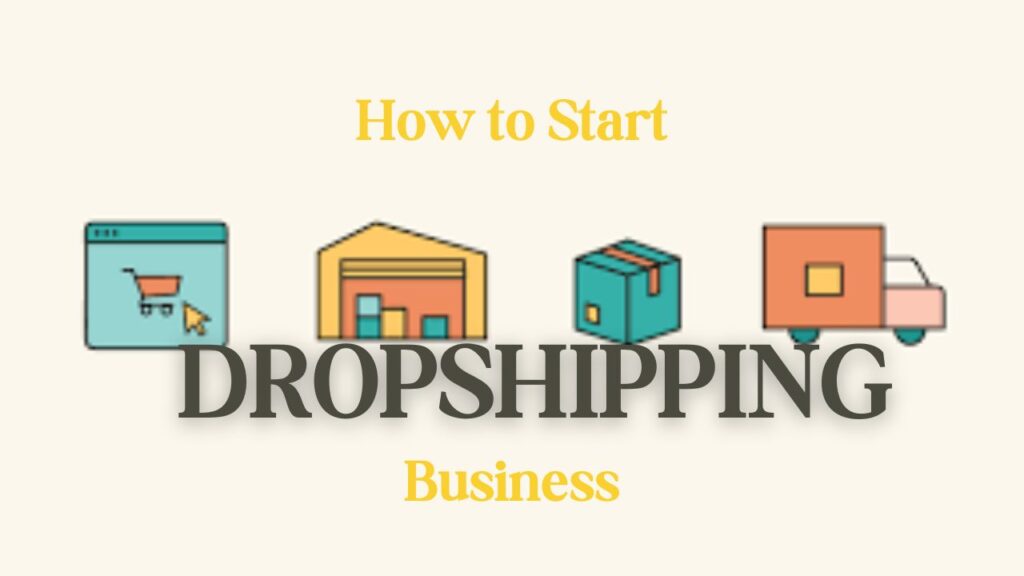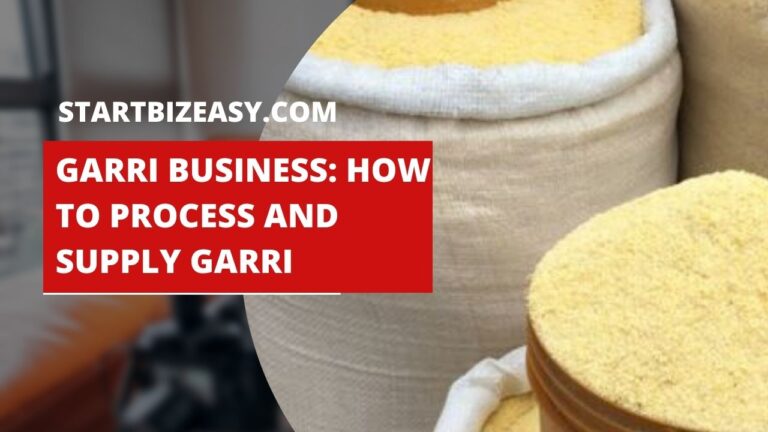Looking for a guide on how to start a dropshipping business, this article is for you. In this article, we revealed all the secrets you need to succeed in the dropshipping business and the proven strategies to convert leads.

Launching a dropshipping business has emerged as a trendy avenue for individuals seeking to embrace entrepreneurship and generate income in contemporary times. This business model boasts numerous advantages, including:
Simple Learning Curve: The dropshipping model is relatively straightforward to comprehend and implement, making it accessible to a wide range of aspiring entrepreneurs.
Minimal Initial and Operational Expenses: Compared to traditional brick-and-mortar businesses, dropshipping requires significantly lower startup and running costs. This financial advantage allows individuals to venture into entrepreneurship with reduced financial risks.
Global Scalability Made Easy: One of the key benefits of dropshipping is its inherent potential for global expansion. With the help of e-commerce platforms and international shipping services, entrepreneurs can effortlessly extend their reach to customers worldwide.
In addition, dropshipping business is one of the businesses out there that you can start with no money or as little as $100. Which makes it an excellent choice for individuals interested in bootstrapping a fresh venture.
In this article we will not only look at; how to start a dropshipping business, but also look at other important aspects that will help make your dropshipping business successful.
Table of Contents
What Is Dropshipping?

Dropshipping refers to a method of fulfilling orders in which online businesses sell products sourced from third-party suppliers.
This approach is often favored by companies looking to avoid the complexities of inventory management and logistics. Instead, dropshipping businesses primarily focus on product branding and marketing.
Dropshippers establish partnerships with selected suppliers, taking charge of fees and communication involved in the process. These suppliers can include third-party manufacturers, wholesalers, or retailers.
Types of dropshipping

There are several popular types of dropshipping such as;
- Reseller: Dropshippers seek out products from various suppliers to sell in their online stores. Reselling products is the most common form of dropshipping business.
- Business Expansion: A dropshipping business can collaborate with other retailers to sell its products online, thus expanding its market reach.
- Custom Products: This type of dropshipping offers customers the opportunity to customize the products they purchase.
Additionally, depending on the partnership, dropshippers can also market products under their own brand and label.
As a result, many customers are unable to distinguish between a dropshipping business and a regular online store.
How profitable is dropshipping?
Dropshippers typically generate a profit of not less than 20% per sale, resulting in an average annual income of up to $100,000. This translates to a monthly income of approximately $8,333.
Though there are expenses every droppshipers must incur such as; “funds allocated toward product procurement from suppliers, dropshipping fees, website hosting expenses, and marketing initiatives” which might reduce the annual income.
Dropshipping stands out as one of the most lucrative business models due to its exemption from shipping and manufacturing costs, which are typically borne by the suppliers.
In addition to making more profit in the dropshipping business, you should opt for high-margin products or engage in reverse dropshipping.
How to Start a Dropshipping Business

1. Choosing a Dropshipping Business Idea
The initial stages of launching your dropshipping business require a brilliant idea as a crucial first step. To generate this idea, consider the following:
- Research Popular and Growing Trends: Conduct thorough research on trending topics that are currently popular and projected to continue growing.
- Identify In-Demand Dropshipping Products: Determine which products are in high demand and readily available for dropshipping.
You may wonder why these steps are essential. Well, attempting to sell products that have no market demand is unlikely to yield profitable results. Similarly, focusing your efforts on products that cannot be easily dropshipped will hinder your business’s potential success.
Before settling on a dropshipping niche or establishing your store branding, invest time in exploring available options and rely on reliable trend data to make informed decisions. This approach ensures wise allocation of resources toward store setup, product catalog, and custom designs in the future.
Let’s get more insights into the two steps prementioned
A. Research Popular and Growing Trends:
Some examples of current product trends that continue to thrive include:
- Embroidered and crocheted clothing
- Personalized pet beds and food trays
- Bright and colorful accessories, inspired by Y2K fashion
- Platform sandals, knee-high boots, and chunky heels
To delve deeper into current trends, utilize trustworthy resources such as Ahrefs Keyword Explorer, Google Trends, and Google Ads Keyword Planner.
Once you have identified popular trends, compile notes on the ones that resonate with you the most. Remember, pursuing what you genuinely love serves as a motivational factor and increases the likelihood of long-term success for your business.
B. Identify In-Demand Dropshipping Products:
To discover suitable dropshipping products, rely on reliable databases like:
- Thieve
- Sell The Trend
- Pexda
- Commerce Inspector
- Niche Scraper
Save links to on-trend products that align with your brand. After selecting your initial product lineup, conduct thorough research on each product and gather as much information as possible about your suppliers. It is advisable to order product samples to assess their quality.
Pro tip: It is acceptable to have products from different suppliers, but strive to maintain consistent quality and shipping time. For instance, avoid offering a product with a shipping time of 2 to 3 weeks if the rest of your catalog ships within 5 days. Similarly, ensure product sustainability aligns with your eco-friendly offerings to maintain a cohesive brand image.
Remember, it is crucial to prioritize your customers’ satisfaction by offering popular products you are genuinely proud of. The extra effort invested in this process will be worthwhile in the long run!
2. Conducting a Market Analysis is crucial.
Once you’ve got your dropshipping niche in mind, it becomes crucial to conduct thorough market research to evaluate the industry you are entering. The focus of your market analysis should primarily revolve around understanding your main competitors and target audience.
Researching the market before establishing your dropshipping store is essential as it allows you to switch to a different niche if the initial results appear unpromising.
To initiate your market research, delve into the following aspects:
Industry Value and Market Size: Gather information regarding the size of your market niche, prevailing trends, and the growth rate. This data will provide insights into whether there is a sufficient customer base interested in the products you plan to offer. Tools like Semrush can assist in this research process.
Target Audience: Consider the demographic characteristics of your niche, including age range, gender, income level, hobbies, and occupation. This information will play a crucial role in determining the profitability of your dropshipping business idea.
Customer Buying Behavior: Observe and understand consumer behavior to identify the factors that drive product demand. Additionally, analyze the frequency with which they make similar product purchases to determine appropriate pricing strategies.
Main Competitors: Identify competitor websites and examine their performance in the market. Utilize online tools like Similarweb to uncover market gaps and gain insights into your competitors’ strengths and weaknesses. Limit your research to around five competitors to ensure focused analysis.
This comprehensive analysis will enable you to make informed decisions and develop accurate projections for your dropshipping business. Estimating revenues and formulating effective marketing strategies will become more achievable with a solid understanding of the market dynamics in your chosen niche.
3. Locating a Dropshipping Supplier is essential.
Discovering reliable suppliers is crucial for the success of your dropshipping business. Surprisingly, industry research indicates that 84% of dropshipping merchants consider finding a good supplier to be the most significant hurdle in their dropshipping entrepreneurial journey.
It’s essential to partner with suppliers who not only fulfill small-scale orders but also have the ability to scale alongside your growing business. Thankfully, there are several avenues to explore when searching for the right supplier:
Independent Suppliers: Conduct a direct search on platforms like Google to find independent suppliers. It’s important to invest time in researching supplier reviews, engaging with other sellers for recommendations (if possible), and carefully vetting potential suppliers. Keep in mind that this manual approach may require significant time and effort for thorough research.
Dropshipping Marketplaces: An alternative option is to leverage dropshipping marketplaces that connect you with a wide array of pre-vetted partners. Choose a marketplace that seamlessly integrates with your eCommerce platform.
Print-on-Demand (POD): If you desire a more personalized offering, consider integrating with a POD platform such as Modalyst, Printful, or Printify. POD allows you to sell customized products featuring your own designs or logos. Similar to traditional dropshipping, you can select from a vast range of products and outsource printing and fulfillment to your chosen supplier.
When evaluating potential suppliers, ensure they provide realistic and transparent shipping estimates. It’s also important to consider the proximity of suppliers to your shipping regions, as this can impact shipping time and the overall customer experience. Request samples of your products and leverage reviews from other merchants to gauge the reliability of your chosen supplier.
By carefully selecting trustworthy suppliers, you can establish a solid foundation for your dropshipping business, ensuring smooth operations and a positive customer experience.
4. Build your e-commerce store
After concluding on your preferred dropshipping idea, conducting a thorough market analysis, and deciding to use a great supplier for your dropshipping business, it is important to create an online store for your dropshipping business.
The online store, preferrable called an e-commerce store is a website that will serve the purpose of showcasing your products in an appealing manner before the eyes of your customers and also facilitate smooth purchase transactions.
For beginners, building an e-commerce store can be challenging due to the various components involved.
But if you are confused about the best platform to build your e-commerce store, below is the list of the current best e-commerce platforms;
- Shopify
- Big Cartel
- BigCommerce
- Ecwid
- Shift4Shop
- Squarespace
- Square Online
- Weebly
- Wix
- WooCommerce
Among many others, you can consider starting with one of the prementioned listed e-commerce platforms.
What makes the prementioned e-commerce stores among the best platform for dropshippers is that; “they are all automated”.
By “Automated” I mean that the e-commerce websites automate the entire process, from product sales to order fulfillment with the suppliers. Automation eliminates the necessity of daily manual order entry, thus reducing the chances of errors.
But if you are not ok with any of the prementioned items you can conduct personal research to discover more e-commerce platform that best suits your dropshipping business.
Apart from choosing the best e-commerce platform for this business, there are other essentials requirement that must be attained or met before your e-commerce store can become a reality. Such as;
- Content Management System (CMS): Choose a CMS platform like WordPress, Shopify, or Squarespace. These platforms provide user-friendly interfaces for website creation and management.
- Domain Name: Select a unique and memorable domain name for your e-commerce store. This will serve as your website’s address.
- Web Hosting (if using WordPress): If you opt for WordPress, you’ll need reliable web hosting to ensure your website is accessible to visitors.
- Integrations with Dropshippers: Integrate your chosen dropshippers into your e-commerce store. This enables seamless order processing and automated communication with suppliers.
- Payment Gateway: Integrate a secure and dependable payment gateway that enables customers to make online payments directly on your website.
In addition, consider selling your product through social media, especially Facebook and Instagram, and through popular online marketplaces like Amazon, Jumia, and Konga (recommended if you want a large customer base in Africa), eBay, Esty, and others.
By selling through those additional channels, broaden your global reach to more customers.
5. Register Your Business
Now you got your website up and running, it is important to register your dropshipping business in compliance with relevant country and state laws before you begin marketing and selling products.
Failure to do so might hinder the existence and trustworthiness of your business.
In registering your dropshipping business, it is important to seek legal advice on which of the business structure perfectly suit your vision for the business.
In seeking out the type of legal structure that will work perfectly with your business, you can consider these 3 major types of business structures.
1. Sole Proprietorship: This business structure might seem like the simplest to establish, but it comes with significant risks. While you have complete control over the business and its profits, if a lawsuit is filed against your company for any reason and the judgment does not favor you, your company will be responsible for the entire loss. In the event that your company is unable to cover the full loss, your personal assets will be used to compensate for it.
That is why this business structure is known for its lack of personal liability protection.
2. Partnership: Embracing the power of synergy, partnership serves as an intriguing alternative to the sole proprietorship model. By joining forces with one or more individuals, you can embark on a collective journey to success. Particularly advantageous for budding brands, this collaborative approach holds tremendous potential.
It is important to emphasize that partnerships are of two types;
- Limited Partnership
- Limited liability Partnership
The one you choose to run your dropshipping company with will determine the level of protection you and your partners will have against personal assets.
Also, it is imperative to exercise caution in your operational endeavors and establish effective lines of communication to prevent any potential complications that may arise between partners.
3. Limited Liability Company (LLC): This business structure establishes your business as a separate legal entity and grants you personal liability protection.
It might seem like the best business structure, but it also comes with a price of members shouldering the burden of self-employment taxes because an LLC business structure doesn’t have to pay corporate income taxes.
Regardless of the business structure you choose, it’s vital to thoroughly research and understand the requirements before registering your business.
After establishing your business structure successfully, it is highly advisable to produce the following documents to enhance customer confidence:
Refund Policy: Establishing a transparent refund policy is crucial for building trust among customers. It provides reassurance that your dropshipping business is a secure platform for making purchases.
Return or Exchange Policy: Since customers are unable to physically inspect products while shopping online, incorporating a clear return or exchange policy instills confidence in the quality of your products. It encourages customers to proceed with their purchases.
Terms and Conditions: It is essential to have a comprehensive legal document outlining both your company’s and customers’ rights and responsibilities. This document effectively manages expectations and safeguards your business interests.
Privacy Policy: A privacy policy elucidates how your business collects, utilizes, and discloses customer information. By demonstrating your commitment to handling customer data responsibly, it further solidifies trust in your business.
By diligently creating and adhering to these essential documents, you can significantly enhance customer trust and propel your dropshipping venture to new heights.
6. Optimized and Promote Your Dropshipping Business
Merely setting up your dropshipping website is not enough to attract a substantial amount of customers. It is imperative to engage in marketing efforts to promote your new dropshipping business.
And since your business operates online, traditional word-of-mouth marketing within your local community may not be sufficient and it is not recommended.
Marketing your dropshipping business requires strategic approaches to attract customers and increase brand exposure.
Here are a variety of techniques that you can employ;
Search Engine Optimization (SEO): Enhance the visibility of your store on search engine results pages (SERPs) by optimizing your website. By incorporating relevant keywords, improving site structure, and creating high-quality content, you can attract potential customers and increase organic traffic.
Blogging: Engage your target audience by consistently creating valuable content through blog posts. Informative articles about your dropshipping products can establish your business as an authority in the field and foster connections with your audience.
Email Marketing: Build an email list by incorporating a subscription form on your store. Offer an introductory discount to incentivize users to sign up. Utilize email marketing to nurture leads, provide updates, and keep existing customers excited about your products.
Social Media: Take advantage of various social media platforms to reach a broader audience. Share your products and relevant content on platforms like Facebook, Instagram, Twitter, and LinkedIn. This approach enhances brand exposure and facilitates direct engagement with customers.
Paid Advertising (Ads): Utilize platforms like Google Ads and Facebook Ads to target specific demographics and increase your reach. Paid ads can generate immediate traffic to your store and effectively attract potential customers.
Influencer Marketing: Collaborate with influential individuals in your industry who have a substantial following. Partnering with influencers to promote your products on their channels allows you to tap into their credibility and reach a wider audience, significantly boosting brand awareness.
Affiliate Marketing: Implement an affiliate marketing program where affiliates receive a commission for each customer they refer to your store. This low-risk and cost-effective strategy incentivizes affiliates to promote your products, driving more traffic and generating sales.
By combining these marketing strategies based on your budget and business growth, you can maximize the exposure of your dropshipping business, attract customers, and achieve long-term success.
Key resources;
- How to Start a Ecommerce Business
- How to Start a Business Online in 11 Easy Steps
- How to Start a Business with No Money
- How to Start a Small Business:
- Best 18 Small Business Ideas from Home
Conclusion
I believe this article “How to Start a Dropshipping Business” have answered all your question about starting a dropshipping business.
If you have any questions or contributions, please leave them in the comment section below.
Remember to turn on the Bell 🔔 Notification icon, to get updated directly on your device when new articles are published.





